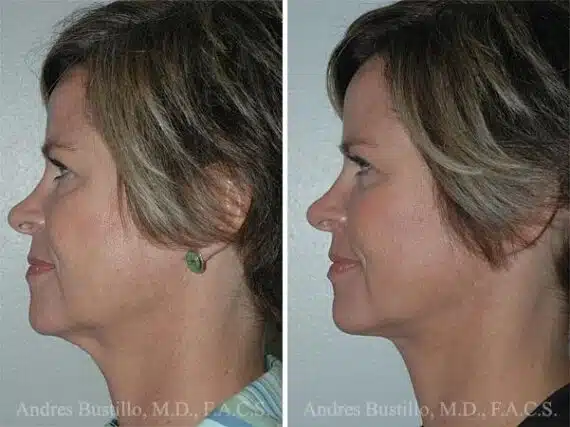Have you been dreaming of a more youthful appearance but feel hesitant about undergoing surgery? You’re not alone. Thanks to ongoing advancements in aesthetic medicine, there are now many innovative ways to rejuvenate your face without committing to a traditional facelift.
These modern facelift alternatives are designed to give impressive results with less downtime, fewer risks, and more accessibility. From non-invasive treatments to less intensive surgical techniques, today’s cosmetic options can be tailored to fit your lifestyle, your needs, and your aesthetic goals. Let’s explore what’s possible.

What is the Best Alternative to a Facelift?
There isn’t a single best alternative to a traditional facelift—it depends on your unique needs and facial aging patterns. Several procedures can mimic the effects of a facelift while offering less invasive options. For some, injectables or skin-tightening devices may be ideal, while others may benefit more from minimally invasive surgical lifts. The right choice depends on factors like skin laxity, age, and desired outcome. Ultimately, it’s about aligning the treatment with your aesthetic goals, lifestyle, and the degree of rejuvenation you’re aiming for to restore a naturally youthful face.
Non-Surgical Alternatives to Facelift for Jowls
If you’re seeking facial rejuvenation without the need for surgery, there are several effective cosmetic procedures that can help improve the appearance of jowls. These techniques work by tightening the skin, boosting collagen production, and restoring volume to give you a more contoured, youthful look. Non-surgical options can be ideal for those wanting visible results without the downtime of traditional surgery. Best of all, they support your natural beauty while offering customizable treatments to match your lifestyle and goals.
Injectable Treatments
Injectable treatments are among the most popular non-surgical options for addressing jowls and restoring facial volume. A liquid facelift combines the strategic use of dermal fillers and Botox to lift and smooth the lower face. Fillers containing hyaluronic acid add volume and improve contour, while Botox relaxes facial muscles to reduce dynamic wrinkles. These treatments also stimulate collagen production over time, enhancing skin firmness and elasticity. With minimal downtime and noticeable results, injectables offer a versatile and highly customizable solution for achieving a rejuvenated appearance.
Laser Skin Resurfacing
Laser skin resurfacing is a powerful treatment that uses concentrated light energy to improve skin texture, tone, and elasticity. By targeting the deeper layers of the skin, it stimulates collagen production and reduces signs of aging like fine lines, sagging, and pigmentation. This method is especially effective for those with mild to moderate skin laxity and sun damage. Best of all, it can deliver dramatic improvements without the need for surgical intervention, making it an attractive option for individuals looking for rejuvenation with minimal recovery time.
Radiofrequency Microneedling
Radiofrequency microneedling combines the benefits of traditional microneedling with the deep tissue stimulation of radiofrequency energy. Tiny needles create micro-injuries in the skin, allowing the RF energy to penetrate deeper layers and trigger intensive healing responses. As new collagen forms, skin becomes tighter, smoother, and more youthful in appearance. This treatment is especially effective for mild skin sagging and fine lines, particularly along the jawline and lower face. It’s a versatile option with minimal downtime and is well-suited for those seeking gradual, natural-looking improvements.
Ultherapy
Ultherapy is a non-invasive treatment that uses focused ultrasound energy to lift and tighten the skin on the lower face and neck. It works by delivering heat deep beneath the skin’s surface to stimulate the body’s natural healing response. As collagen production increases, skin gradually becomes firmer and more lifted. Ultherapy is particularly effective for mild to moderate sagging and can be a great option for those seeking visible improvement without downtime. It’s FDA-approved and clinically proven to rejuvenate targeted areas without disrupting the skin’s surface.
Minimally Invasive Facelift Alternatives
For those who want more noticeable results than non-surgical treatments can provide but aren’t ready for a full surgical facelift, less-invasive methods offer a compelling middle ground. These techniques are designed to lift and contour the face with smaller incisions, faster recovery, and less disruption to daily life. If you’re exploring other options that strike a balance between effectiveness and minimal downtime, these alternatives might be the perfect fit.
Thread Lifts
Thread lifts are a minimally-invasive treatment that uses dissolvable sutures to lift sagging skin in targeted areas of the face, such as the cheeks, jawline, and neck. Unlike traditional surgery, thread lifts require no large incisions or general anesthesia. The threads stimulate collagen production as they dissolve, gradually enhancing skin firmness and elasticity over time. This treatment is ideal for those experiencing mild to moderate skin laxity who want subtle yet noticeable lifting results with minimal recovery. It’s a great bridge between non-surgical options and more invasive procedures.
Mini Facelift
The mini facelift is a minimally-invasive alternative that provides targeted lifting of the lower face with shorter incisions and a quicker recovery than a complete facelift. This technique focuses on improving sagging around the jawline and cheeks, making it ideal for patients with early signs of aging. While it doesn’t offer the comprehensive results of a full facelift, it delivers a significant refresh with fewer risks and a faster return to normal activities. The mini facelift strikes a balance between subtle rejuvenation and surgical effectiveness.
Surgical Facelift Options
While non-surgical and minimally invasive treatments offer excellent improvements, some patients may require a more advanced surgical procedure to achieve their desired outcome. Surgical facelift options provide the most dramatic and long-lasting results, making them ideal for individuals with significant skin laxity or deep facial aging. These methods are often part of comprehensive rejuvenation plans that can include both facial and neck enhancements. For those seeking transformative results, plastic surgery remains the gold standard in facial rejuvenation.
Neck Lift Surgery
Neck lift surgery targets sagging skin, excess fat, and weakened muscles in the neck and jawline area. This procedure is especially effective for patients dealing with turkey neck or pronounced jowls that non-surgical treatments can’t adequately address. By tightening underlying muscles and removing excess skin, a neck lift creates a smoother, more defined profile. It can be performed on its own or in conjunction with other facial surgeries for comprehensive results. For those wanting significant and lasting rejuvenation of the lower face and neck, this option is highly effective.
Deep Plane Facelift Surgery
The advanced deep plane facelift technique is one of the most advanced techniques for addressing moderate to severe facial aging. Unlike traditional facelifts that lift only the skin, this method repositions deeper facial tissues to restore a youthful contour from within. By targeting the layer beneath the facial muscles, it allows for more natural-looking and longer-lasting results. This approach is particularly beneficial for improving the mid-face, jawline, and neck, and is ideal for patients seeking significant rejuvenation. The precise repositioning of facial tissues sets this procedure apart in terms of both effect and longevity.
How Can I Determine Which Face Lift Alternative Benefits Me the Most?
Choosing the right facelift alternative depends on a range of factors, including your facial structure, the degree of aging, skin elasticity, and your desired outcome. Non-surgical treatments may be ideal for subtle refinements, while minimally invasive or surgical options may be better suited for more advanced signs of aging. Each person ages differently, so there’s no one-size-fits-all approach when it comes to improving facial appearance.
The best way to ensure you’re making the right decision is to consult with an experienced facial plastic surgeon. A personalized consultation can help assess your goals and determine which treatment will deliver the most natural, long-lasting results. Let’s explore why partnering with the right expert truly makes all the difference.
Questions about your procedure?
Schedule a consultation with Dr. Andres Bustillo.
Consulting a Facial Rejuvenation Expert for Your Procedure
When considering cosmetic surgery or any alternative facial rejuvenation treatment, choosing an experienced, board-certified specialist is key. The nuances of facial anatomy and the precision required for optimal results make expertise not just important, but essential. A skilled surgeon can tailor each procedure to your unique features and deliver outcomes that look natural and refined.
Dr. Andres Bustillo, a board-certified facial plastic surgeon in Miami, brings over 20 years of experience and advanced training from the prestigious NYU-Weill Cornell fellowship program. Known as a Top Doctor in Miami, Dr. Bustillo blends surgical precision with artistic vision. Call us today at 305-663-3380 or visit our contact page to schedule your personalized consultation.




